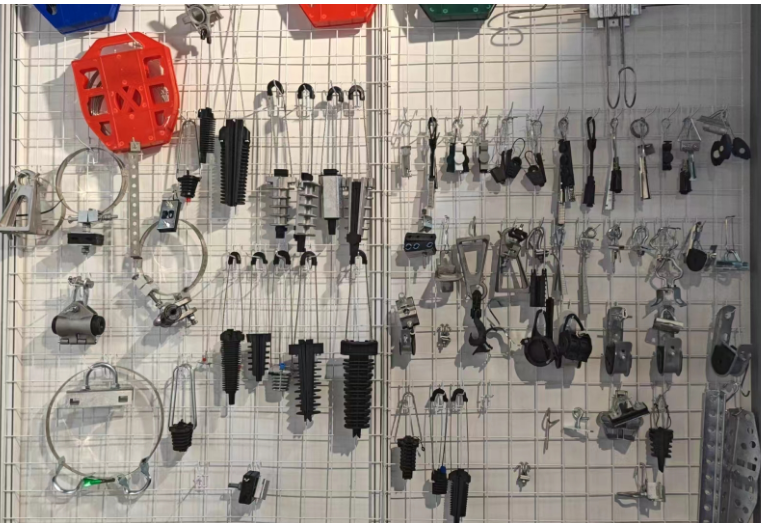A Fiber Optic Tension Clamp is a device used in fiber optic cable installations to secure and manage the tension of the optical fibers. Fiber optic cables carry data in the form of light signals, and it’s essential to maintain proper tension to ensure optimal performance and longevity of the cable.
The tension clamp is typically used in aerial installations where the fiber optic cable is suspended between poles or other support structures. The clamp is designed to securely hold the cable without causing any damage to the delicate fibers inside.

Key features of a Fiber Optic Tension Clamp may include:
- Gripping Mechanism: The clamp usually has a mechanism for gripping the fiber optic cable firmly. This can be a set of adjustable clamps or other secure fastening methods.
- Adjustability: Many tension clamps are adjustable to accommodate different cable diameters and tensions. This ensures flexibility in handling various types of fiber optic cables.
- Materials: Tension clamps are often made from materials that are resistant to environmental factors such as weather, UV radiation, and corrosion. Common materials include aluminum alloys or stainless steel.
- Installation: The design of the clamp should facilitate easy installation and removal. This is important for maintenance or when reconfiguring the network.
- Strain Relief: Tension clamps may include features for strain relief, which helps to prevent excessive bending or stress on the fiber optic cable. This is crucial for maintaining signal integrity.
- Compatibility: The clamp should be compatible with the specific type of fiber optic cable being used, considering factors such as cable diameter and construction.

